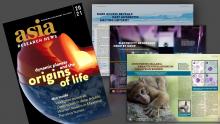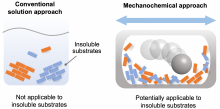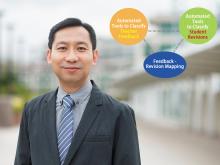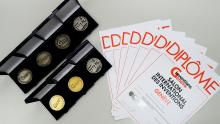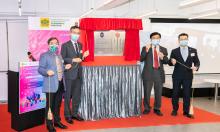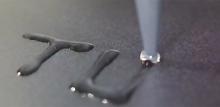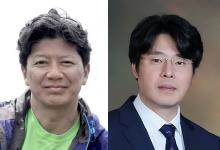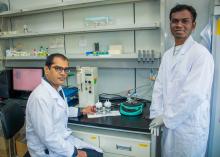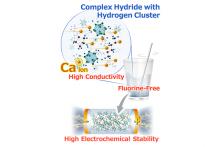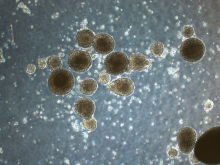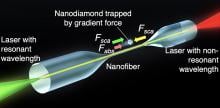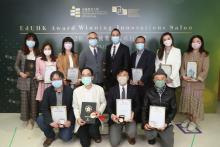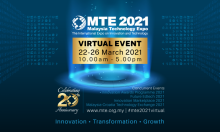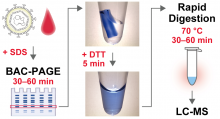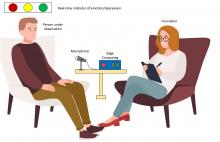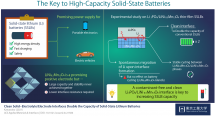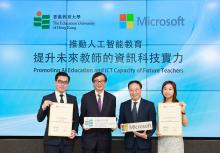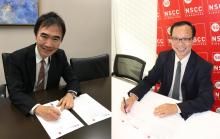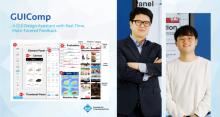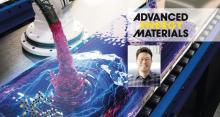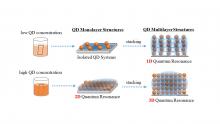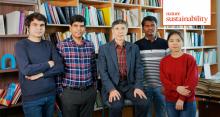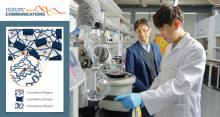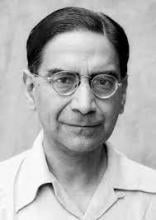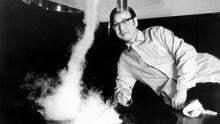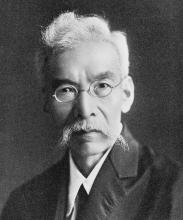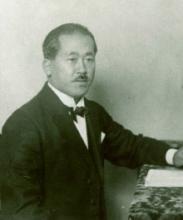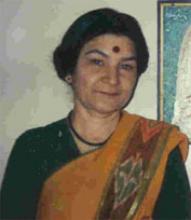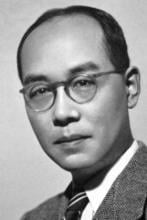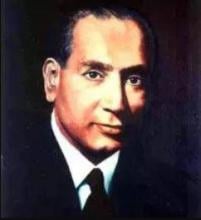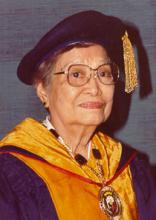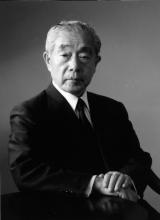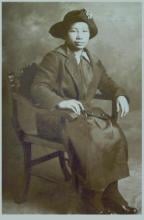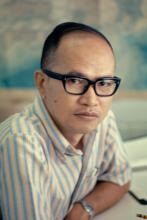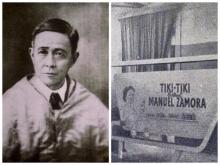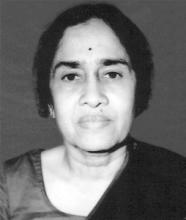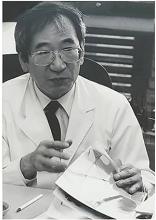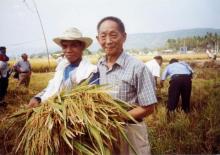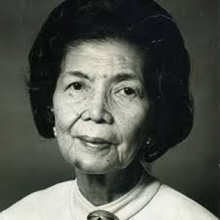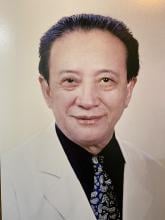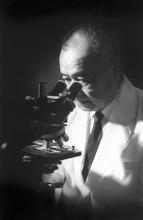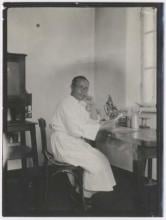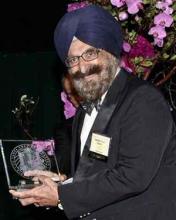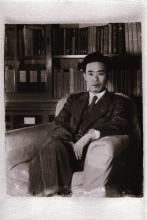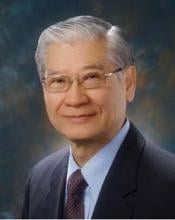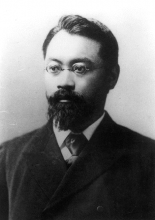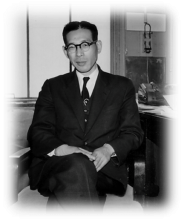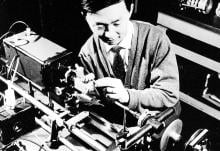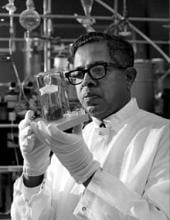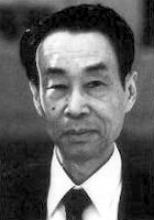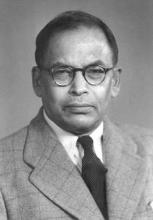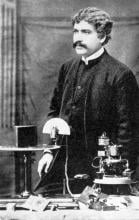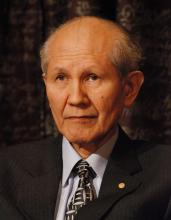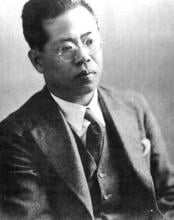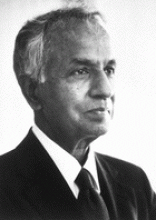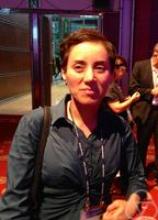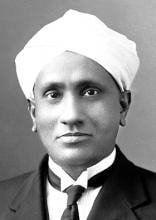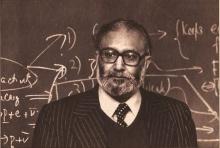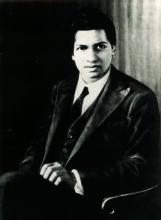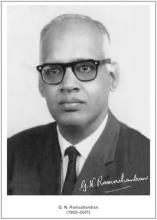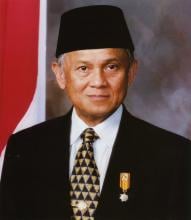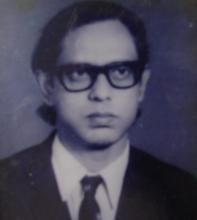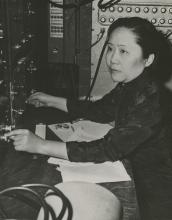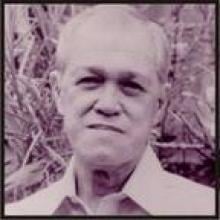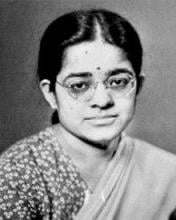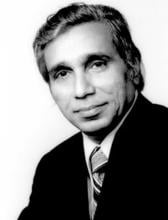Innovation
News
18 May 2021
Scientists from Hokkaido University have developed a rapid, efficient protocol for cross-coupling reactions, vastly expanding the pool of chemicals that can be used for the synthesis of useful organic compounds.
12 May 2021
Invented by Professor Ho Wing-kei at the Department of Science and Environmental Studies of The Education University of Hong Kong (EdUHK), the novel graphitic carbon nitride photocatalyst provides an innovative way for environmental purification. Compared to the traditional photocatalyst such as titanium dioxide, which can only be activated by UV light, and has a relatively low effectiveness in air pollutant degradation, the newly developed photocatalyst can utilise visible light (daylight or indoor light) as the light source for photocatalytic reactions.
11 May 2021
First-of-its-kind in Singapore, the clinical trial will test a technology that enables specific cell therapy products to be manufactured for use in patients.
03 May 2021
Students' revision of their drafts is recognised as an important strategy to support the development of their writing skills. It involves a complex process of evaluating text, diagnosing problems and making revisions to improve the text. Research found that novice writers tend to make surface revisions to their drafts while experienced writers tend to make text-based revisions that can alter the overall meaning of the text. Research also found that offering feedback on the drafts can be useful in bridging gaps between students’ actual and desired writing performance in the course of revision.
28 Apr 2021
The Education University of Hong Kong (EdUHK) has received two Gold Medals and five Silver Medals in the first-ever virtual edition of Geneva’s Inventions Expo held in March 2021, setting the best record since participating in the competition.
21 Apr 2021
Lingnan University in Hong Kong (LU) - ‘LU Jockey Club Gerontechnology and Smart Ageing Project’ (the project) organised a two-day conference entitled “Gerontechnology Conference⸺Partnership Strategies for a Collaborative Society’ on 15 and 16 April 2021. The guests of honour, Dr Lam Ching-choi, Chairman of the Elderly Commission and Mr Leong Cheung, Executive Director, Charities and Community of The Hong Kong Jockey Club, officiated at the launch ceremony with Prof Leonard K Cheng, President of Lingnan University , and Prof Joshua Mok Ka-ho, Vice-President of Lingnan University .
15 Apr 2021
A research team based at Tohoku University has 3D printed the first proton exchange membrane, a critical component of batteries, electrochemical capacitors and fuel cells.
14 Apr 2021
Prof. June.M. Kwak, and Prof. Chang-Hee Cho are selected for the research funds granted by Samsung Science & Technology Foundation
13 Apr 2021
Scientists develop high performing electrocatalyst to synthesize ammonia in an effort to replace conventional eco-unfriendly methods
09 Apr 2021
The first alliance of its kind between the two countries launched on 8 April 2021
07 Apr 2021
New national body established to further research insights, improve patient outcomes and create new economic opportunities for the biomedical technology industry.
06 Apr 2021
Scientists from Tohoku University have developed a new fluorine-free calcium (Ca) electrolyte based on a hydrogen (monocarborane) cluster that could potentially realize rechargeable Ca batteries.
29 Mar 2021
A hydrogel, a type of soft matter, developed at Hokkaido University successfully reverted cancer cells back to cancer stem cells within 24 hours, in six different human cancer types. This could lead to the development of anti-cancer stem cell drugs and personalized medicines.
26 Mar 2021
Scientists have developed a method to use lasers to control the movement of nanodiamonds with fluorescent centers.
24 Mar 2021
With the aim of promoting knowledge transfer, The Education University of Hong Kong (EdUHK) hosted the Award-Winning Innovations Salon (AWIS) to showcase its award-winning projects recognised in international invention and innovation competitions in 2020. During the past year, the University won 22 international awards.
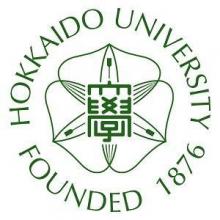
19 Mar 2021
On March 19, 2021, Hokkaido University, Robotic Biology Institute Inc., iLAC Co., Ltd., and Shionogi & Co., Ltd. have entered into a memorandum of understanding (MOU) toward the establishment of an automated system for the analysis of the novel coronavirus (SARS-CoV-2) in wastewater.
17 Mar 2021
The theme for MTE 2021 is “Innovations for Adaption, Transformation and Growth” and this prestigious event is set to target over 10,000 online visitors from all across the globe on its virtual exhibition platform.
18 Feb 2021
Polyacrylamide gel electrophoresis enables high-resolution separation of proteins extracted from biological samples, but it requires more than one day of pretreatment to recover the separated proteins trapped inside the gel for detection by mass spectrometry. BAC-DROP, our novel electrophoresis technology, uses a dissolvable form of polyacrylamide gel, which allows sample pretreatment to be completed in about 5 hours. The developed technology will enable the rapid diagnosis of viruses and disease protein markers.
03 Feb 2021
A deep learning algorithm can detect emotion, including depression, using a voice signal. The system, developed by Teddy Surya Gunawan at the International Islamic University Malaysia, could be used by suicide prevention call centres and psychological counsellors.
28 Jan 2021
The Education University of Hong Kong (EdUHK) participated for the first time in the International Innovation and Invention Competition (IIIC) Taiwan held in November 2020. Six innovations covering education technology, wellness and environmental science received four gold and two silver medals, including three out of a possible four gold medals in the EdTech innovation category.
26 Jan 2021
Solid-state lithium batteries (SSLB), unlike their liquid lithium-ion counterparts, are dry and do not need extra cooling, rendering them safer and capable of providing more energy. A research team has recently discovered that a clean electrolyte/electrode interface can double the capacity of SSLBs, paving the way for a more sustainable future.
03 Dec 2020
To better prepare prospective teachers with digital and technological skills, The Education University of Hong Kong (EdUHK) and Microsoft Hong Kong have signed a Memorandum of Understanding (MOU), which covers different areas of collaboration, including:
30 Nov 2020
New collaboration between Japan’s RIKEN Center for Computational Science (R-CCS), Research Organization for Information Science and Technology (RIST) and National Supercomputing Centre (NSCC) Singapore, will allow Singapore scientists to directly tap on Japan’s Fugaku supercomputer to do ground breaking research, enhance educational activities and develop talent in high performance computing (HPC).
26 Nov 2020
The Education University of Hong Kong (EdUHK) has received a donation of HK$5 million from the Li Ka Shing Foundation in support of the Centre for Learning, Teaching and Technology to cultivate artificial intelligence (AI) literacy and develop e-learning materials in Mathematics.
20 Nov 2020
A research team, affiliated with South Korea's Ulsan National Institute of Science and Technology (UNIST) has developed a deep learning-based AI system that can provide design recommendations regarding the best layouts through the assessment of graphical user interfaces (GUIs) of the mobile application.
20 Nov 2020
A recent study, affiliated with South Korea's Ulsan National Institute of Science and Technology (UNIST) has unveiled a novel technology that can improve the efficiency of quantum dot solar cells to 11.53% has been unveiled.
19 Nov 2020
Scientists have found a way to control an interaction between quantum dots that could lead to more efficient solar cells.
19 Nov 2020
A recent study, affiliated with South Korea's Ulsan National Institute of Science and Technology (UNIST) has introduced a novel catalyst synthesis method, capable of generating hydrogen from yeasts, the main microorganisms involved in alcohol and bread fermentation.
19 Nov 2020
A research team, affiliated with South Korea's Ulsan National Institute of Science and Technology (UNIST) has succeeded in fabricating highly integrated arrays of PTFTs and logic gates via all-solution processing.
Events
Sorry, no events coming up for this topic.
Researchers
Sorry, no researchers coming up for this topic.
- « first
- ‹ previous
- 1
- 2
- 3
Giants in history
Physicist and statistician Prasanta Chandra Mahalanobis (29 June 1893– 28 June 1972), who founded the Indian Statistical Institute in 1931, is known for his pioneering application of statistics to practical problems.
Tetsuya Theodore Fujita (23 October 1920 – 19 November 1998) was a Japanese-American meteorologist who created the Fujita scale that classifies the strength of tornadoes based on damage to structures and vegetation.
In 1915, pathologist Katsusaburo Yamagiwa and his research assistant Koichi Ichikawa became the first to prove that chronic exposure to chemicals can cause cancer.
In 1915, Koichi Ichikawa along with pathologist Katsusaburo Yamagiwa became the first to prove that chronic exposure to chemicals can cause cancer.
A pioneer of bio-organic chemistry, Darshan Ranganathan (4 June 1941 – 4 June 2001) is remembered for developing a protocol for synthesising imidazole, a compound used to make antifungal drugs and antibiotics. Widely considered India’s most prolific researcher in chemistry, she also published dozens of papers in renowned journals on protein folding, molecular design, chemical simulation of key biological processes, and the synthesis of functional hybrid peptides and nanotubes.
In his over 30 year career in rice research, Munshi Siddique Ahmad (1924 – 19 October 2011) developed more than 30 varieties of high-yielding rice, including the BRRI Shail strain, which was responsible for increasing the rice production of Bangladesh from 8 million tonnes in 1965 to 20 million tonnes in 1975.
Hideki Yukawa (23 January 1907 – 8 September 1981) was awarded the Nobel Prize in Physics in 1949 for predicting the existence of the pi meson subatomic particle. Japan’s first Nobel laureate, Yakawa also expressed his support for nuclear disarmament by signing the Russell–Einstein Manifesto in 1955.
Ground-breaking cancer researcher Kamal Jayasing Ranadive (8 November 1917 – 11 April 2001) advanced the understanding of the causes of leukaemia, breast cancer and oesophageal cancer through the use of animal models. She was also among the first to recognise how susceptibility to cancer is linked to tumour-causing interactions between hormones and viruses.
Birbal Sahni (14 November 1891 – 10 April 1949), a pioneer of Indian palaeobotanical research, and founder of what is now the Birbal Sahni Institute of Palaeosciences in Lucknow, made multiple contributions to the study of prehistoric plants. These include the discovery of a new group of fossil gymnosperms (named Pentoxylae), reconstruction of the extinct Williamsonia sewardiana plant, and description of a new type of petrified wood from the Jurassic age.
The research of Filipino pharmaceutical chemist Luz Oliveros-Belardo (3 November 1906 – 12 December 1999) focussed on essential oils and other chemicals derived from native Philippine plants.
Japanese chemist Kenichi Fukui (4 October 1918 – 9 January 1998) was the first Asian scientist to be awarded the Nobel Prize in Chemistry. Together with Roald Hoffman, he received this honour in 1981 for his independent research into the mechanisms of chemical reactions.
Filipina chemist María Orosa (29 November 1892–13 February 1945) fought malnutrition and food insecurity in the Philippines by devising over 700 culinary creations including Soyalac, a nutrient rich drink made from soybeans, and Darak, rice cookies packed with Vitamin B1, which could prevent beriberi disease caused by Vitamin B1 deficiency. She was also a partisan of the guerrilla movement resisting Japanese occupation during World War II, and died after being struck by shrapnel while working in her laboratory during the Battle of Manila.
Research by Filipino plant scientist Benito Vergara (23 June 1934 – 24 October 2015) on the physiology of rice led to the development of deep-water and cold-tolerant rice varieties. Vergara also made several contributions to expanding public awareness of rice science.
Filipino chemist and pharmacist Manuel A. Zamora (29 March 1870 – 9 July 1929) is best remembered for his discovery of the tiki-tiki formula to combat beriberi, a disease caused by Vitamin B1 deficiency.
In 1939, biochemist Kamala Sohonie (18 June 1911 – 28 June 1998) became the first woman to be accepted into the Indian Institute of Science (IISc).
Korean parasitologist Seung-Yull Cho (16 November 1943 – 27 January 2019) is remembered largely for his pioneering works to control infections caused by helminthic parasites and his contribution to journal publishing.
Chinese agronomist Yuan Longping (7 September 1930 – 22 May 2021) developed the first varieties of the high-yield, hybrid rice that brought food security to multiple countries including China, which had been ravaged by food shortages as recently as the mid-20th century.
Fe Villanueva del Mundo (27 November 1911 – 6 August 2011) was a Filipina paediatrician who founded the Philippines’ first paediatric hospital.
After witnessing death and suffering as a youth in his home village during World War II, Nguyễn Tài Thu (6 April 1931 – 14 February 2021) set his sights on alleviating pain by becoming a doctor. After studying Traditional Chinese Medicine in China in the 1950s, Thu returned to Vietnam to serve in military hospitals. Eventually, he became the country’s foremost practitioner of acupuncture, a technique he first learned by inserting needles into himself.
Minoru Shirota (April 23, 1899 – March 10, 1982) was a Japanese microbiologist who invented the popular fermented drink Yakult.
Wu Lien-teh (10 March 1879 – 21 January 1960) was a Malaysian-born doctor who invented a mask that effectively suppressed disease transmission. Winning the prestigious Queen’s Scholarship enabled Wu to become the first Chinese student to study medicine at the University of Cambridge.
Physicist Narinder Singh Kapany (31 October 1926 – 4 December 2020) pioneered the use of optical fibres to transmit images, and founded several optical technology companies. Born in Punjab, India, he worked at a local optical instruments factory before moving to London for PhD studies at Imperial College. There, he devised a flexible fibrescope to convey images along bundles of glass fibres.
Japanese physicist Ukichiro Nakaya (1900-1962) made the world’s first artificial snowflakes. He started his research on snow crystals in the early 1930s at Hokkaido University, where there is an unlimited supply of natural snow in winter. By taking over 3,000 photographs, he established a classification of natural snow crystals and described their relationship with weather conditions.
David T. Wong (born 1936) is a Hong Kong-born American neuroscientist who is best known for discovering the antidepressant drug fluoxetine, better known as Prozac.
The techniques that make industrial pearl culturing possible were developed over a century ago at the Misaki Marine Biological Station in Japan. The station’s first director, Professor Kakichi Mitsukuri, emphasized to Kokichi Mikimoto in 1890 that stimulating pearl sac formation was important for pearl growth, and they went on to successfully develop methods for culturing pearls.
The field of solid-state ionics originated in Europe, but Takehiko Takahashi of Nagoya University in Japan was the first to coin the term ‘solid ionics’ in 1967. ‘Solid-state ionics’ first appeared in 1971 in another of his papers, and was likely a play on ‘solid-state electronics’, another rapidly growing field at the time.
Charles Kuen Kao (Nov. 4, 1933 to Sept. 23, 2018) was an engineer who is regarded as the father of fibre optics. His work in the 1960s on long distance signal transmission using very pure glass fibres revolutionized telecommunications, enabling innovations such as the Internet.
Cyril Andrew Ponnamperuma (16 October 1923 – 20 December 1994) was a Sri Lankan chemist who was interested in the origins of life on Earth. His research in chemical evolution showed how inanimate molecules may have given rise to the building blocks of life – a process known as abiogenesis.
Motoo Kimura (13 November 1924 – 13 November 1994) was a Japanese theoretical population geneticist who is best remembered for developing the neutral theory of molecular evolution.
Meghnad Saha (6 October 1893 – 16 February 1956) was an Indian astrophysicist best known for formulating the Saha ionization equation which describes the chemical and physical properties of stars.
Sir Jagadish Chandra Bose (30 November 1858 – 23 November 1937) was a scientist and inventor who contributed to a wide range of scientific fields such as physics, botany and biology.
Osamu Shimomura (27 August 1928 – 19 October 2018) was a Japanese organic chemist and marine biologist who dedicated his career to understanding how organisms emitted light.
Woo Jang-choon (8 April 1898 – 10 August 1959) was a Korean-Japanese agricultural scientist and botanist.
Subrahmanyan Chandrasekhar (19 October 1910 – 21 August 1995) was an Indian astrophysicist who studied the structure and evolution of stars.
Mathematician Maryam Mirzakhani (12 May 1977 – 14 July 2017) was the first and only woman and Iranian to date to win the Fields Medal in 2014 for her work on curved surfaces.
Sir Chandrasekhara Venkata Raman (7 November 1888 – 21 November 1970) was an Indian physicist who performed ground-breaking research in the field of light-scattering.
Mohammad Abdus Salam (29 January 1926 – 21 November 1996) was a theoretical physicist and the first Pakistani to receive a Nobel Prize in science.
Srinivasa Ramanujan (22 December 1887 – 26 April 1920) was a math prodigy and widely considered one of India’s greatest mathematicians. Despite having almost no formal training in mathematics, he made substantial contributions to mathematical analysis, number theory, infinite series and continued fractions.
Gopalasamudram Narayanan Ramachandran (8 October 1922 – 7 April 2001) is best known for developing the Ramachandran plot to understand the structure of short chains of amino acids, known as peptides.
Bacharuddin Jusuf Habibie (25 June 1936 – 11 September 2019) was an Indonesian engineer who was President of Indonesia from 1998 to 1999.
Abdus Suttar Khan (c. 1941 – 31 January 2008) was a Bangladeshi engineer who spent a significant part of his career conducting aerospace research with NASA, United Technology and Alstom.
Chien-Shiung Wu (31 May 1912 – 16 February 1997) was an experimental physicist who made several important contributions to nuclear physics. Wu worked on the Manhattan Project – a top-secret program for the production of nuclear weapons during World War II and helped to develop a process for separating uranium into U235 and U238.
Julian Arca Banzon (13 March 1908 – 13 September 1988) was a biochemist from the Philippines who was a pioneer in alternative fuel research. Banzon investigated the use of indigenous crops as sources of renewable fuels and chemicals.
Rajeshwari Chatterjee (24 January 1922 – 3 September 2010) was the first female engineer from Karnataka in India.
Fazlur Rahman Khan (3 April 1929 – 27 March 1982) was a Bangladeshi-American structural engineer and architect who invented the tube principle, which formed the basis for modern skyscraper design.


